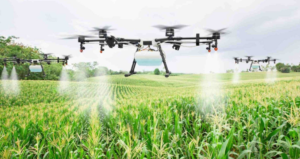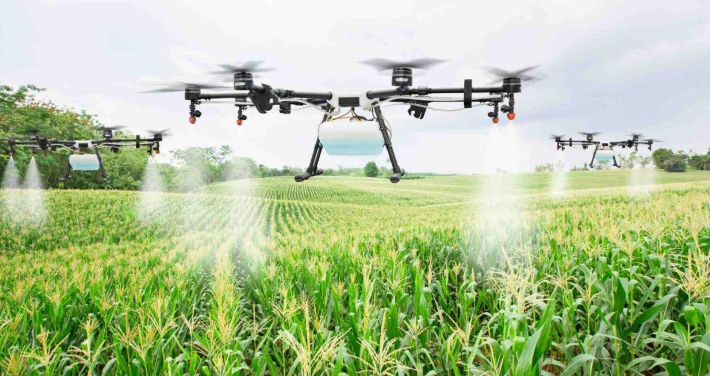Engineering the Future: Perspectives from Our Research into Agricultural Catastrophes
Agriculture has taken several jolts, which result in disasters and dislocate the economy of a nation concerning food security. Research established that the impact of these agricultural catastrophes must be understood so that effective solutions may be found. Causes and consequences during such catastrophes help experts prepare better strategies and technologies for the future.
All of these threats of the changing climate, pests, and plant diseases are disastrous for farming. Innovative approaches to safeguarding agriculture in these conditions are a real necessity. Scientists and farmers perform research to explore new ways of increasing crop resistance.
In disseminating results from this important research, readers will gain a much clearer understanding of the modern agricultural scenario and newer ways of reducing the potential of certain risks over the coming years.
Key Messages
- Agrarian disasters are understood so one knows how to plan for the future.
- There can be new ways to diminish the challenge by innovative strategies.
- Their effective solution is crucial for food safety.
Evaluation of Agricultural Disasters
These are the reasons that agricultural disasters could have significant impacts on food security, economies, and ecosystems. In order to get a comprehensive view of these impacts, one has to consider past failures, current challenges, and ways of predicting future risks.
Historical Analysis of Agricultural Failures
More often than not, agricultural failures throughout history have come in the forms of drought, floods, or pest infestations. A major example was the Dust Bowl in the 1930s. The actions caused massive crop failures in the United States, leading to hunger and economic loss across the board.
Examples of such failures include the 2008 rice price crisis, where poor crop yields in India led to a rise in rice prices worldwide, hence food insecurity across the globe.
The study of such historical events provides valuable insight into the patterns and consequences of agricultural disaster. Data of past failures clearly shows the vulnerabilities of specific crops and modes of farming.
Current Challenges in Agricultural Sustainability
Some of the pressing challenges posed to agriculture in modern times are the threat to sustainability through changes in climate, resource depletion, and changing consumer demands. Extreme events such as hurricanes and droughts are on the rise.
Farmers face soil degradation and water scarcity. The Food and Agriculture Organization says that approximately 1/3 of Earth’s soil has degraded, affecting productivity.
Another concern is related to the management of pests. Due to this changing climate, new pests and diseases can spread very quickly and may create an attack on crops. It is of high significance that these challenges be solved in order to ensure food supplies as well as keeping the incomes of farmers intact.
Predictive Models for Future Risks
Predictive modeling is one of the notable tools that play a crucial role in estimating future agricultural risks. These models take into consideration data on weather, soil properties, and crop performance when forecasting potential failures.
For instance, the intake of data patterns by machine learning algorithms could be made to predict drought impacts on crop yields. Farmers adjust accordingly based on the data predictions of such algorithms their planting schedule and strategies.
Other models also consider the economic aspects. These are those that consider how market fluctuations can affect food availability. Predictive models advise policymakers on how to make proper preparations for possible agricultural calamities. This will ensure greater resilience against uncertainties.
The predictive models inculcate a factor of risk understanding and hence decision-making becomes better by integrating various data sources.
Innovative Strategies for Mitigation
There is a need for innovative strategies required to address agriculture challenges. These techniques aim at increasing crop resilience, better water management, and using smart policies to trigger sustainable actions.
Advances in Crop Resilience
Recent studies have outlined several approaches to improving crop resilience against pests, diseases, and climate stress.
- Genetic Modification: The potential for genetically engineering crops to be resistant to extreme weather conditions will have much to offer. For example, the drought-resistant varieties will thrive in arid conditions.
- Agroecological Practices: It unites traditional farming practices with modern science to improve biodiversity, which helps create a healthy ecosystem that supports more robust crops.
- Precision Farming: The amalgamation of technology, drones, and soil sensors has ensured that crop health will be under a close eye. Indeed, this will provide complete data with precision on the amount of fertilizers and pesticides to be used during the right time.
Apart from these methods, it ensures that crop survival increases and yields higher as well with the reduction in the use of harmful chemicals.
Water Resource Management Techniques
Water management plays the most important role in agriculture. Better techniques can help preserve the precious resource while providing enough moisture to the crops.
Drip Irrigation: In this method, the water reaches the plant directly right at the roots. It minimizes waste while providing the plants with the exact quantum that they would need, more so in arid regions.
- Rainwater Harvesting: This is achievable through the collection and storage of rainwater for irrigation purposes as a way of controlling dependency on groundwater. Through this system, farmers can undertake the normal hydration of crops when the rainfall is low.
- Soil Moisture Monitoring: Soil moisture monitoring through sensors will help the farmers avoid overwatering, thus enabling them to put good irrigation practices into place. On that note, farmers can easily alter the frequency of watering their crops based on real-time data.
Since these are crucial strategies, they not only ensure that crops are healthy but also assure one of making sustainable use of water.
Policy and Economic Interventions
Strong policies and economic measures will give impetus to the shift in sustainable agriculture methods.
- Subsidizing Sustainable Practices: Farmers, for example, may be incentivised with money to grow crops by organic farming or using a minimum amount of pesticides.
- Research Funding: Allocation of funds into agricultural research results in the invention of new technologies and practices that will reduce risks.
- Education and Training: Workshops to educate farmers on innovative practices or technologies may result in both diffusion and adoption of innovation. Events also fall under this category, as well as workshops and extension services.
These interventions might also provide farmers with the skills to adapt to various changing conditions and hence build resilience in the agriculture sector.

Also Read :
- Pioneering Solutions: Exploring liqour development in Engineering
- Automotive Engineering: The Shift Towards Electric Mobility
- The Role of Engineering in Disaster Management and Mitigation
- Nanotechnology in Engineering: Applications and Future Prospects
- Engineering Project Management: Best Practices for 2024
